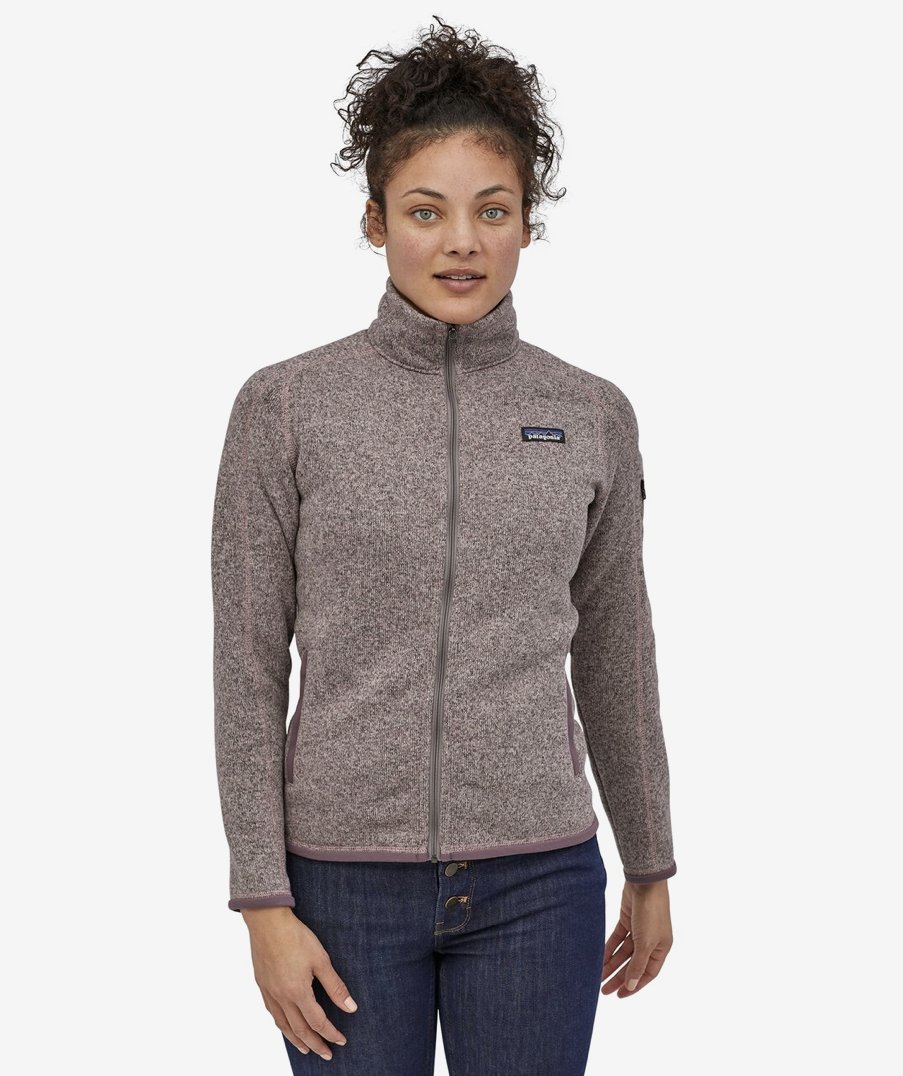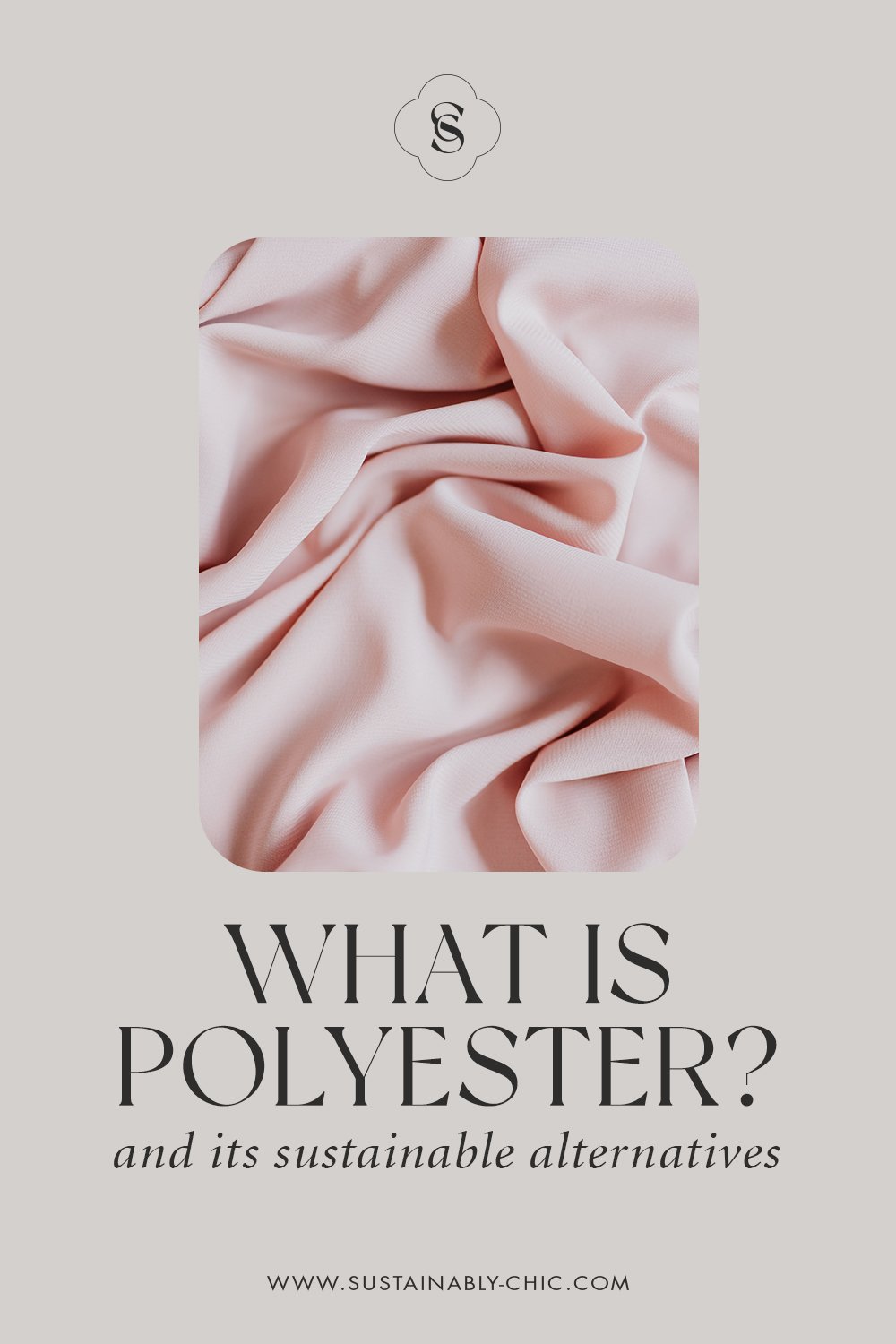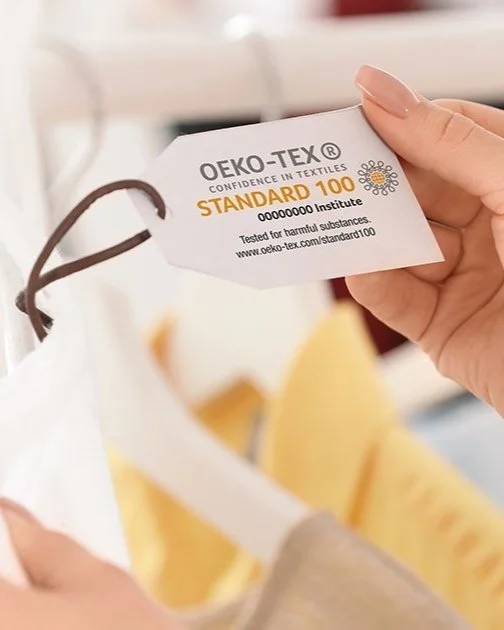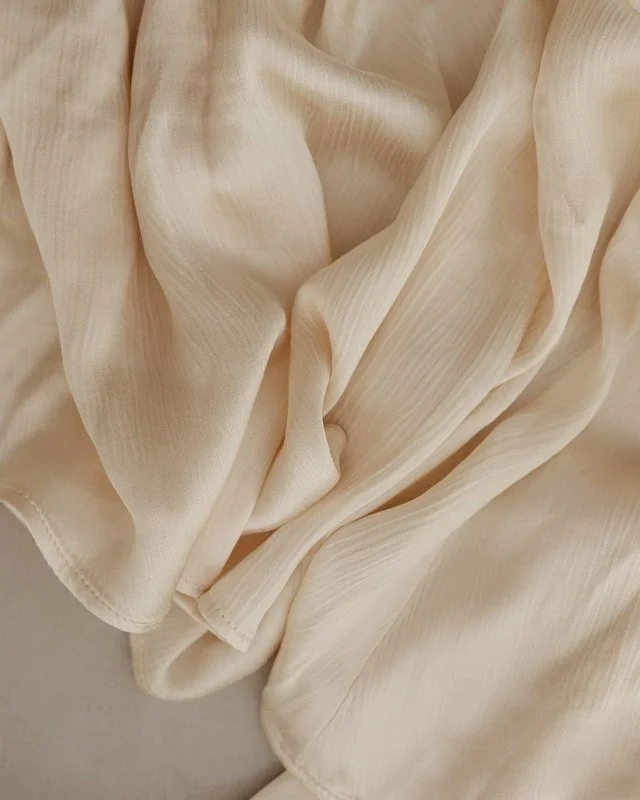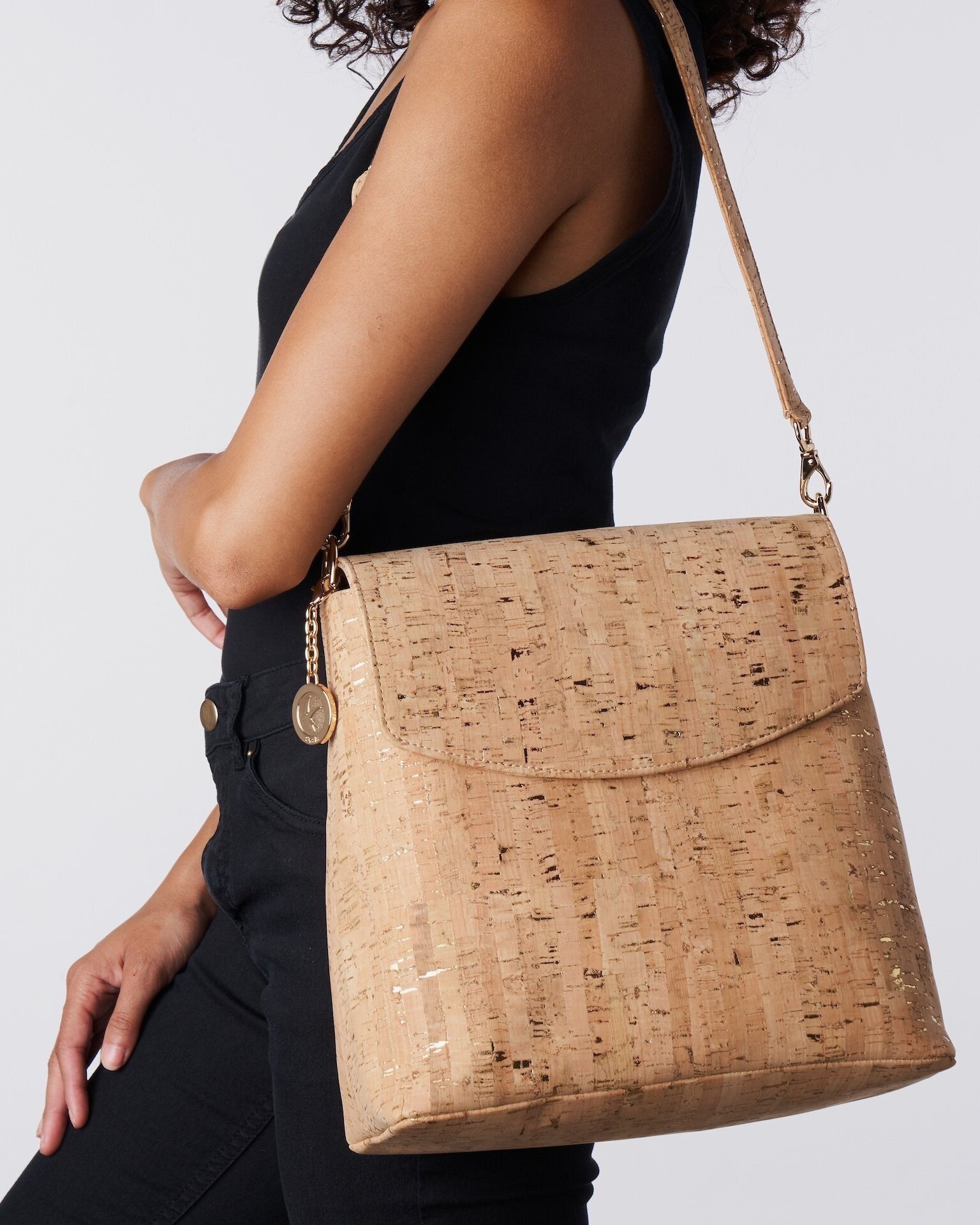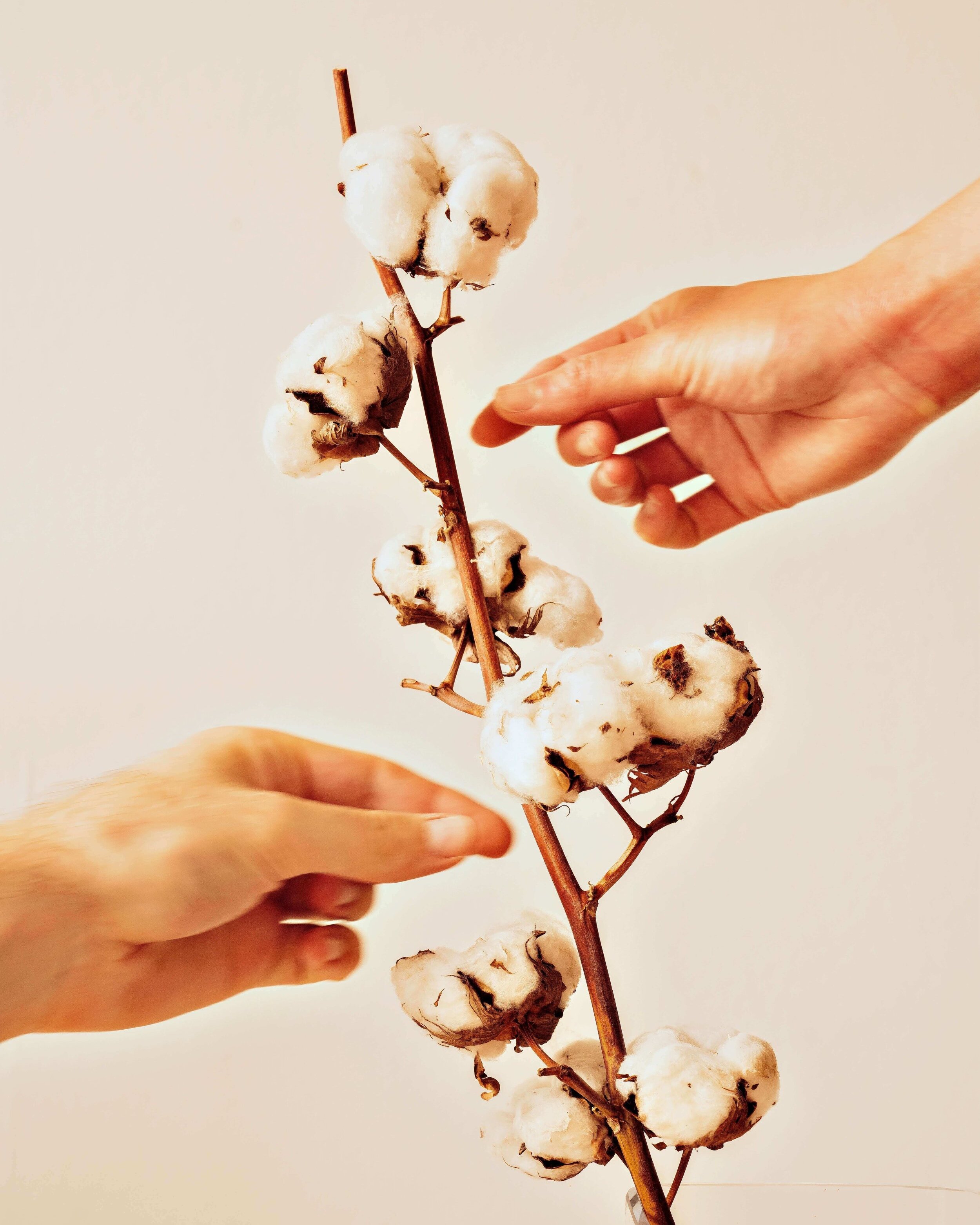What is Polyester? (& its sustainable alternatives)
What is polyester?
When I think about polyester, the images that come to mind are bright power-suits from the 80’s and cheap clothes from fast fashion brands. We know that it is an unsustainable fabric and should be avoided where possible, but what is it actually made from and what makes it so bad for the environment? It’s important to know the facts behind fabrics so we can make more informed choices when we shop, so let’s find out more about polyester!
The Science Behind the Fabric
Polyester is a chemical term which can be broken into poly (many), and ester (a basic organic chemical compound). The main ingredient used in the production of polyester is ethylene, which is derived from petroleum. In this process, ethylene is the polymer, the chemical building block of polyester, and the chemical process that produces the finished polyester is called “polymerization”.
A synthetic fiber derived from coal, air, water, and petroleum, polyester fibers are formed from a chemical reaction between an acid and alcohol. In this reaction, two or more molecules combine to make a large molecule whose structure repeats throughout its length. Polyester fibers can form very long molecules that are very stable and strong.
A brief history of polyester
Wallace Hume Carothers was an American chemist, inventor and the leader of organic chemistry at DuPont, an American chemical company. During the mid-1930s Carothers discovered that he could create fibers by mixing carboxylic acids and alcohols, and ‘stumbled’ upon Nylon, which is still a popular fabric used today. In 1939, two British scientists, W.K. Birtwhistle and C.G. Ritchie continued Carothers work and by 1941 the first polyester fiber was developed, called Terylene. DuPont bought the rights from the two scientists and later came up with their own polyester fiber called Dacron.
Unlike natural fabrics like wool and cotton, polyester was created out of scientific research and was marketed accordingly. Announced to the American public in 1951, polyester’s main selling point was that it could be “worn for 68 days straight without ironing, and still look presentable”. This had a huge appeal to women, who at the time were the primary homemakers, leading to the soaring popularity of the fabric.
Polyester is now the most widely used fiber in the world, accounting for roughly half of the overall fiber market and around 80% of synthetics fiber, according to the Textile Exchange Preferred Fiber Materials Report 2017. In 2016, polyester fiber production was estimated at 52 million metric tons.
Where do you find polyester?
Polyester is used in the manufacturing of many products, including clothing, home furnishings, industrial fabrics, and electrical insulation. Polyester is light, strong and easily dyed, can be woven or knitted and is easily blended with other fibres. In fashion polyester is an incredibly versatile fabric that can be used to make anything from activewear to bridalwear.
Another form of polyester used in fashion is poly-blends. Originally, this referred to combining two or more different poly materials to make a separate material, but is now commonly used to refer to the blending of polyester fibres and natural ones. Poly-cotton, linen blends and terrycot (a blend of terylene and cotton) are common poly-blends used in fashion.
What makes polyester unsustainable?
While polyester is a synthetic fiber, its raw materials are technically natural. Most polyester is made out of petroleum, a non-renewable carbon-intensive resource. Petroleum, also known as crude oil and oil, is a naturally occurring, yellowish-black liquid found in geological formations beneath the Earth's surface. We are currently using up petroleum much faster than it can be produced in nature, and some predictions suggest we will reach maximum extraction by 2030. According to A New Textiles Economy Report 2017, producing plastic-based fibers for textiles uses an estimated 342 million barrels of oil each year.
Polyester has often been considered more sustainable from a consumer care standpoint as polyester garments last a really long time and require less water, energy and heat for washing. But because the fabric is designed to last for so long, it takes more than 200 years to decompose. While this wouldn’t be as much of an issue if we could guarantee clothes are not thrown away, around 85% of all textiles thrown away in the U.S., roughly 13 million tonnes in 2017, are either dumped into landfills or burned.
During a polyester product’s lifecycle, there are environmental implications. For example, hundreds of thousands of microfibers are released into the wastewater when we wash synthetic and natural clothes. The jury is still out on how harmful the natural microfibers are, but we now know that plastic microfibers are being ingested by marine life, animals and even humans. Each cycle of a washing machine could release more than 700,000 microscopic plastic fibers into the environment. While the full extent and impact of these microplastics are not yet clear, it is clear that the problem is widespread (microplastics have been found all around the world) and could have detrimental impacts to plant, animal, and human health.
The limitations of recycling are another factor that makes polyester clothes unsustainable. Most polyester used in clothing currently is virgin polyester, and while there are recycling options for used clothing, less than 1% of collected textiles are recycled back into clothing or textile use. Most of the recycled polyester currently used by leading fashion brands comes from plastic bottles rather than old clothing. In addition, the majority of polyester produced is used in poly-blends rather than 100% polyester fabric, and it is even more difficult to recycle poly-blends. Even a t-shirt made up of 99% cotton and 1% polyester would not be saved from landfill. However, companies such as Swedish forestry cooperative, Södra, are developing processes of separating polyester from cotton.
Recycled Polyester Sweater from Patagonia
Sustainable alternatives to polyester
Now we know why polyester is so bad for the environment, we can start to look for alternatives when we shop. Luckily there are plenty to choose from!
Repreve
REPREVE is a series of recycled fibers made by UNIFI, which include resin, nylon 6, and polyester. REPREVE Polyester is the leading branded performance fiber made from recycled materials, including plastic bottles. Compared to making what's called ‘virgin fiber’, making REPREVE doesn’t require the use of new petroleum, as well as emitting fewer greenhouse gases and conserving water and energy in the process. Over 35 billion plastic bottles have been recycled so far to make REPREVE fabric.
Recycled polyester is a more environmentally sustainable fibre than virgin polyester, but it is not without its problems. Each time plastic is reheated for recycling it degrades, so it cannot be recycled indefinitely. There are also other elements of the process that can be environmentally damaging such as the re-dyeing, the amount of water needed, and the high-temperatures required which can release carcinogenic antimony compounds into the atmosphere. So when you buy recycled polyester clothes, just know that they likely cannot be recycled again.
Natural materials are always great alternatives to polyester. Here are a few examples of alternatives to look out for…
Linen
Linen is a strong fiber derived from the flax plant, which when grown in its natural geographical zones, produces zero waste when harvested and turned into fabric. The flax plant has many other uses and can be turned into paper, oil and other bio-materials. Flax farming requires less water and pesticides to grow than conventional cotton, and if left un-dyed (or eco-dyed) can be totally biodegradable! However, you won’t need to throw it away as linen is known to last for hundreds of wears, making it the perfect fabric to include in your wardrobe.
Hemp
Hemp has been around for thousands of years, is produced on almost every continent in the world, and is one of the most sustainable fabrics you can buy today. It returns up to 70% of the nutrients it takes from the soil during cultivation, which is so important for soil biodiversity. Hemp requires very little water and can produce up to twice as much fiber per hectare as cotton. It also grows organically extremely well, eliminating the need for chemical pesticides and fertilizers. Hemp is biodegradable, breathable, renewable, and feels similar to linen to wear.
Organic Cotton
Organic cotton is the more sustainable version of conventional cotton. Most organic cotton is grown in rain-fed areas; this means farmers rely on rain to water their cotton instead of having to extract water from the ground, which can put pressure on water supplies in local communities. Organic cotton emits up to 46% less greenhouse gas than non-organic and requires 62% less energy to produce than conventional cotton. Another benefit of using organic cotton instead of polyester is that it is free from toxic chemicals used in pesticides and fertilizers, making it better for the environment and your skin!
Avoiding polyester is getting easier but is still not always an option for everyone. If you buy clothes made from polyester, just be sure to look after them, make them last as long as possible, and make sure to either upcycle or donate them if you decide you no longer want them. You can also use washing bags like the Guppyfriend that will catch the microfibers when you wash them, reducing the number of microplastics going out into the ocean!
About the Author
Sarah is a freelance writer with a focus on vegan fashion, sustainability and ethically made clothes. She campaigns for change in the fashion industry through her blog and on her Instagram page.
MAKE SURE TO PIN THE PHOTO BELOW TO SAVE THIS POST FOR LATER!
WANT to find SUSTAINABLE BRANDS? VISIT OUR BRAND DIRECTORY!
Our Brand Directory is home to hundreds of sustainable brands, from makeup to cleaning supplies, from underwear to shoes. We have broken everything down by category for easy shopping, along with discount codes unique to Sustainably Chic viewers.


